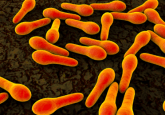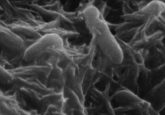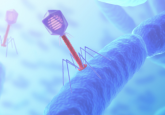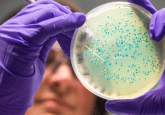Electrochemically active bacteria: amping up the excitement

A new technique for harvesting electrochemically active bacteria in their natural environment is paving the way for further study of the microorganisms.
The discovery of electrochemically active bacteria that can directly manipulate electrical energy in order to fuel some of their biological processes, has inspired researchers with their potential applications in sustainable energy production. But the niche environments in which these bacteria thrive, such as geothermal hot springs, can be difficult to recreate in the lab making the study of these organisms difficult, until now…
A research team from Washington State University (WA, USA), led by Haluk Beyenal, has developed an inexpensive, portable potentiostat that allows them to capture the bacteria in their natural habitats. This device could help to vastly accelerate research into electrochemically active bacteria.
The majority of lifeforms use electrons for an abundance of biochemical processes, such as respiration. While humans source these electrons from the sugars that we consume and pass them onto the oxygen we inhale, the electrochemically active bacteria use protruding wires akin to hairs to “pass their electrons into metals or other solid surfaces, they can produce a stream of electricity that can be used for low‑power applications,” explained Beyenal.
To locate the habitats in which these bacteria reside, the research team had to hike deep into the heart of Yellowstone National Park, to the Heart Lake Geyser Basin (WY, USA) area where they located four alkaline geothermal hot springs. To be able to conduct their experiments at the springs it was vital that their equipment was portable and able to operate on the move.
“This was the first time such bacteria were collected in situ in an extreme environment like an alkaline hot spring,”
With this in mind, the team had previously developed a low-cost, battery operated potentiostat, able to regulate the potential of an electrode, to bring with them on the expedition. Deploying electrodes into the water of each of the hot springs and setting them to varying potentials, the team then left them in situ for 32 days.
After 32 days, the team retrieved the electrodes and conducted microbial community analysis on each one, revealing an enrichment on the electrodes of the electrochemically active bacteria. The electrodes set to the highest cathodic and anodic currents demonstrated the greatest enrichment of the electrochemically active bacteria.
“This was the first time such bacteria were collected in situ in an extreme environment like an alkaline hot spring,” declared Abdelrhman Mohamed, first author of the study.
This study provides an encouraging basis for further experiments into the bacteria, hopefully providing the key that could unlock the full environmental potential of these microorganisms.





